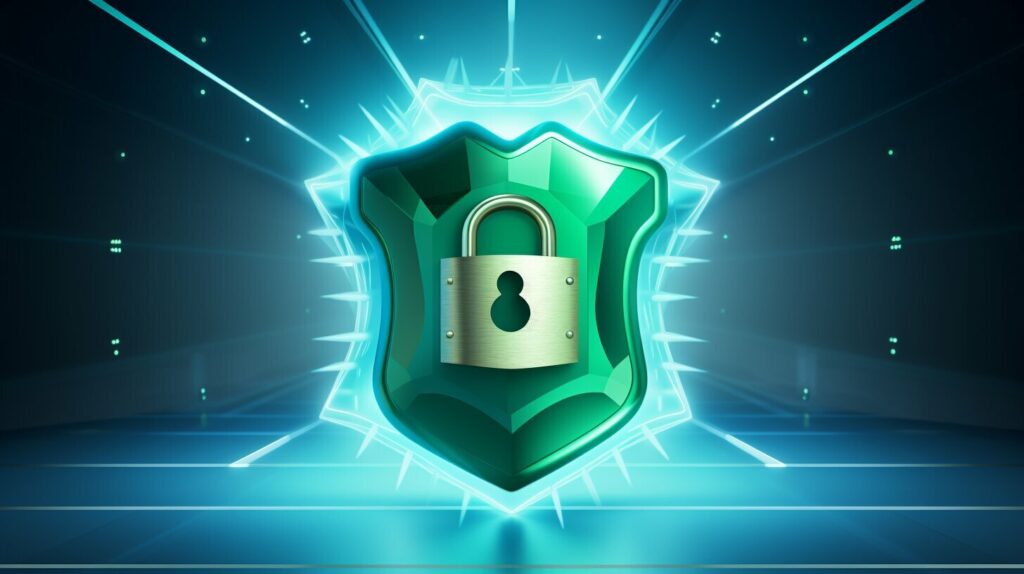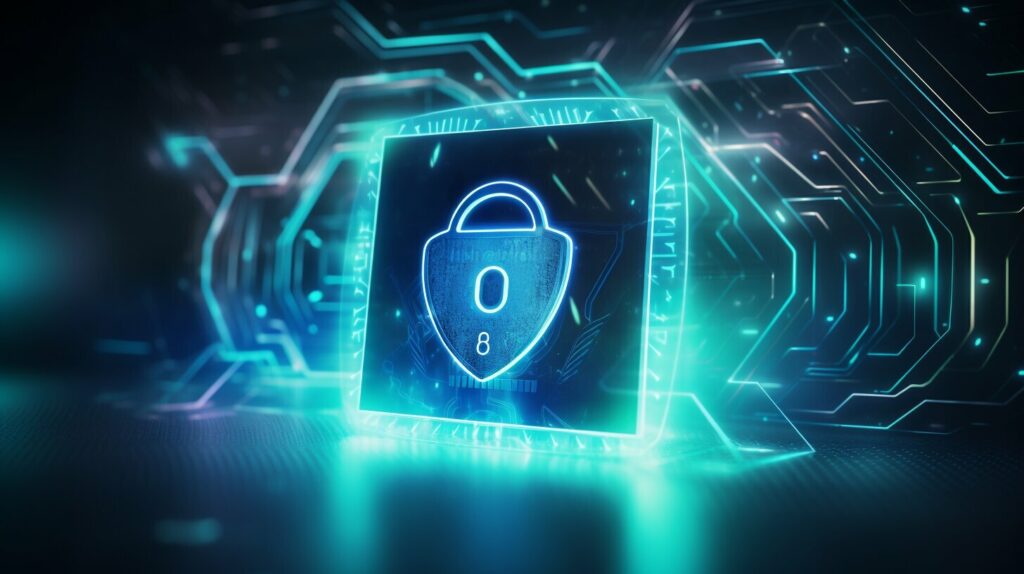As an individual developer, you may wonder if you are eligible to obtain a code signing certificate. Code signing is a critical aspect of software security, and it is essential to have a valid digital certificate to sign your applications. The process of obtaining a code signing certificate involves meeting specific requirements and following a step-by-step procedure.
However, the good news is that individual developers can also obtain code signing certificates. In this article, we will discuss the process of obtaining a code signing certificate as an individual developer, the advantages of code signing, and the best practices to ensure effective code signing.
Key Takeaways
- Individual developers are eligible to obtain code signing certificates.
- Code signing plays a critical role in software security.
- Obtaining a code signing certificate involves meeting specific requirements and following a step-by-step procedure.
- Code signing enhances software integrity and protects against tampering or malware.
Understanding Code Signing and its Importance
Code signing is the process of digitally signing software code to verify the authenticity and integrity of software applications. This is done by using a digital certificate issued by a trusted third party, which serves as a guarantee that the software has not been tampered with since it was signed.
The importance of code signing cannot be overstated in today’s digital age. With the rise of cybercrime and the increasing sophistication of malicious software, code signing is an essential tool in ensuring the security and safety of both users and developers.
By using a code signing certificate, developers can protect their software from being modified or replaced by unauthorized parties, which could lead to security breaches and other serious consequences.
Code signing also provides users with assurance that the software they are downloading or installing comes from a trusted source. This helps to prevent malware and other harmful software from infecting their devices, which could result in data loss, system damage, and other negative outcomes.

Overall, code signing is an essential best practice for developers who want to ensure the security and integrity of their software. By following code signing best practices and obtaining a digital certificate for code signing, developers can protect themselves and their users from the growing threat of cybercrime.
Code Signing Certificate Overview
A code signing certificate is a digital certificate designed to verify the authenticity of software applications and ensure they have not been altered or tampered with since being signed by the original developer. Code signing certificates are essential for software security and are required by most operating systems to install and run software applications.
Code signing certificates serve as a seal of approval, reassuring users that the software they are downloading is legitimate and has not been maliciously modified. To obtain a code signing certificate, developers must meet certain requirements set by the certificate authority (CA) issuing the certificate and pass a validation process to confirm their identity.
Code signing certificates typically require the following information:
- Name and contact information of the developer or organization
- Proof of identity, such as a government-issued ID or business registration documents
- An overview of the software being signed
- Confirmation of ownership of the digital signature key used to sign the software
Once the certificate authority has verified these details, they will issue a digital certificate for code signing. This certificate contains information about the developer and the software it is meant to sign, as well as a cryptographic key that can be used to verify the authenticity of the software.
It is important to note that code signing certificates are not a one-time purchase. They typically need to be renewed periodically to ensure continued validity and security. Moreover, they cannot be shared between developers or organizations and are linked to specific individuals or entities.
Process of Obtaining a Code Signing Certificate
Obtaining a code signing certificate involves several steps, as outlined below:
- Choose a certificate authority: Select a trusted third-party certificate authority (CA) that offers code signing certificates. Examples include DigiCert, Certum, and GlobalSign.
- Generate a certificate signing request (CSR): Create a CSR using your development environment, which includes your public key and identifying information such as your name and email address.
- Submit the CSR to the CA: Use the CA’s web interface to submit the CSR and any additional information required for verification purposes.
- Verify your identity: The CA may require further verification of your identity, such as a phone call or email exchange.
- Receive and install the certificate: Once approved, the CA will issue your code signing certificate. Install the certificate on your development environment to begin signing your code.
It is important to note that the process may vary slightly depending on the CA and the type of certificate being obtained. Some CAs may also require payment for their services.
Overall, obtaining a code signing certificate is a straightforward process that is well worth the effort for individual developers looking to enhance the security of their software.
Advantages of Code Signing for Individuals
Code signing offers a range of benefits for individual developers, including enhanced security and trustworthiness. With a code signing certificate, individuals can ensure that their software is not tampered with, providing a higher level of confidence to end-users.
Code signing also enables developers to establish a public key infrastructure (PKI), which is a critical element in secure software distribution. PKI helps to confirm the identity of the software publisher and ensures that customers can verify the software’s integrity before installation. This helps to protect against malware and unauthorized modifications to the software.
Moreover, code signing can improve a developer’s reputation and increase the potential for wider distribution of their software. Signed software is more likely to be recognized and trusted by security software and operating systems, contributing to a smoother installation process and increasing the likelihood of user adoption.
Finally, obtaining a code signing certificate can potentially save time and money for individual developers. Once the certificate has been obtained, it can be used to sign multiple applications or updates without the need for additional validation. This streamlines the software development process and ensures that all future releases are trusted and secure.
Choosing the Right Code Signing Solution
As an individual developer, selecting the right code signing solution is crucial to ensure the integrity and security of your software. Here are some factors to consider:
| Factor | Considerations |
|---|---|
| Cost | Look for a solution that fits your budget while still meeting your needs. |
| Trustworthiness | Choose a reputable provider with a proven track record in the industry. |
| User Experience | The solution should be easy to use and integrate into your development process. |
| Compatibility | Ensure the solution is compatible with the platforms and technologies you are using. |
Additionally, consider whether the solution offers additional features such as timestamping, which can provide an extra layer of security to your signed code.
Remember, selecting the right code signing solution is just as important as obtaining the certificate itself.

Code Signing Certificates vs. Self-Signed Certificates
While self-signed certificates can be a cost-effective option, they do not offer the same level of trust as code signing certificates issued by a reputable Certificate Authority (CA). Self-signed certificates may also trigger security warnings in some environments, potentially deterring users from downloading or using your software.
Code signing certificates, on the other hand, are issued by a trusted third-party CA, providing an additional layer of trust and security to your signed code.
Code Signing Best Practices for Individuals
While obtaining a code signing certificate is a crucial step in ensuring software security, it is equally important to follow best practices when implementing code signing. Here are some recommended practices for individuals:
- Keep your private key secure: The private key used for code signing should be kept secure to prevent unauthorized access. It should not be shared with others or stored on networked devices.
- Use a timestamp: Including a timestamp in the signed code ensures that the signature remains valid even after the certificate expiration date, preventing unnecessary warnings for users.
- Sign all executable files: All executable files that are part of the software package should be signed, including drivers, libraries, and installers.
- Verify signatures during installation: Verify digital signatures of software during installation to ensure their authenticity before they are used. This can prevent the installation of malware or tampered software.
By adhering to these best practices, individuals can ensure that their signed code is secure and trustworthy.

Ensuring Code Integrity with Code Signing
Code signing provides an essential layer of security that maintains the integrity of software and ensures that it has not been tampered with or infected with malware. A code signing certificate provides a digital signature that verifies the authenticity of the code, providing users with peace of mind that the software is legitimate and safe.
Code signing is particularly vital for individual developers who may not have the resources of larger organizations to protect their software from malicious attacks. By signing code with a digital certificate, developers can safeguard their intellectual property and ensure that users are downloading a trusted application.
The security provided by code signing certificates is multi-faceted, with a range of benefits that individual developers can take advantage of to enhance their software. Firstly, it assures users that the software has not been compromised and is free from malware, providing a higher level of trust in the software.
Code signing also helps to protect against reputation damage that can arise from a security breach or malware attack. If software is infected, the developer’s reputation can be severely impacted, leading to a loss of credibility and revenue.
In addition to these benefits, code signing can also help ensure that software is compatible with different platforms, as some operating systems may require code signing for applications to run smoothly. By signing code with a digital certificate, developers can ensure that their software is fully compatible with a range of platforms and avoid compatibility issues.
To ensure that code signing provides maximum security, there are several best practices that individual developers should follow. These include regularly updating signatures, using strong encryption algorithms, and keeping private keys secure.
Overall, code signing is an essential component of software security that can help enhance user trust, protect against malware, and ensure compatibility across multiple platforms. For individual developers, it provides a critical layer of protection that safeguards their code and intellectual property, helping to prevent reputation damage and maintain credibility.
Incorporating Code Signing into Development Workflow
Integrating code signing into your development workflow is crucial for ensuring software security and integrity. By following the appropriate steps, you can make code signing a seamless part of your development process.
Step 1: Identify the Right Code Signing Software
Before you begin signing your code, you need to select the right software for the task. Take into account factors such as compatibility with your development environment and platform, ease of use, and reputation for security. This will ensure that your code signing process is reliable and efficient.
Step 2: Determine the Appropriate Signing Method
Once you have selected your code signing software, you need to determine the appropriate signing method for your needs. This includes deciding which type of certificate to use, and whether to sign your code locally or through a third-party service.
Step 3: Establish Signing Policies and Procedures
It is essential to establish policies and procedures for signing your code, such as who is authorized to sign the code and the types of checks that need to be performed before signing. This helps ensure that only trustworthy code is signed, and that your code signing process remains secure.
Step 4: Train Your Development Team
Training your development team on code signing best practices is an important step in incorporating code signing into your development workflow. Make sure that everyone who will be signing code is familiar with the process and understands the importance of code signing for security and integrity.

Step 5: Integrate Code Signing into Your Build Process
Finally, you should integrate code signing into your build process to ensure that all code is signed before it is released. This helps ensure that all code is verified and signed correctly, and that your software remains secure and trustworthy.
Conclusion
Obtaining a code signing certificate as an individual developer is indeed possible, and it comes with a host of benefits. Code signing ensures that your software is secure, trustworthy, and free from tampering or malware.
By adhering to recommended code signing best practices, individual developers can maintain the integrity of their code and protect their users from potential threats.
However, it is important to consider the different factors when choosing a code signing solution, and to seamlessly integrate code signing into the development process.
Overall, obtaining a code signing certificate as an individual developer may seem like a daunting process, but with the right knowledge and tools, it is achievable and highly advantageous.
FAQ
Q: Can I obtain a code signing certificate as an individual developer?
A: Yes, individual developers can obtain code signing certificates. However, the process and requirements may vary based on the certificate authority you choose.
Q: What is code signing and why is it important?
A: Code signing is the process of digitally signing software code to verify its authenticity and integrity. It is important because it helps establish trust, prevents tampering or malware injection, and assures users that the software comes from a trusted source.
Q: What is a code signing certificate and how can I obtain one?
A: A code signing certificate is a digital certificate that allows developers to sign their software code. To obtain one, you need to follow the specific requirements set by the certificate authority, which typically include verifying your identity and providing necessary documentation.
Q: What is the process of obtaining a code signing certificate as an individual developer?
A: The process usually involves generating a Certificate Signing Request (CSR), submitting it to the certificate authority, providing necessary documentation to verify your identity, and going through the validation process. Once approved, you can use the issued certificate to sign your code.
Q: What are the advantages of code signing for individual developers?
A: Code signing offers several advantages for individual developers, including enhanced security, establishing trust with users, preventing unauthorized modifications, and ensuring the integrity of software.
Q: How do I choose the right code signing solution as an individual developer?
A: When selecting a code signing solution, consider factors such as compatibility with your development environment, reputation of the certificate authority, pricing, customer support, and any additional features or services that may be beneficial for your specific needs.
Q: What are some best practices for code signing as an individual developer?
A: It is recommended to use a strong private key and password, keep your code signing certificate securely stored, regularly update your certificate, timestamp your signed code, and follow the best practices recommended by the certificate authority and industry standards.
Q: How does code signing ensure code integrity?
A: Code signing ensures code integrity by using cryptographic algorithms to create a unique digital signature for the software code. This signature can be verified by users or systems to ensure that the code has not been tampered with or modified since it was signed.
Q: How can code signing be incorporated into the development workflow?
A: Code signing can be integrated into the development workflow by including it as a step in the build process, automating the code signing process using tools or scripts, and ensuring that all code is signed before being distributed to users or deployed in production environments.





